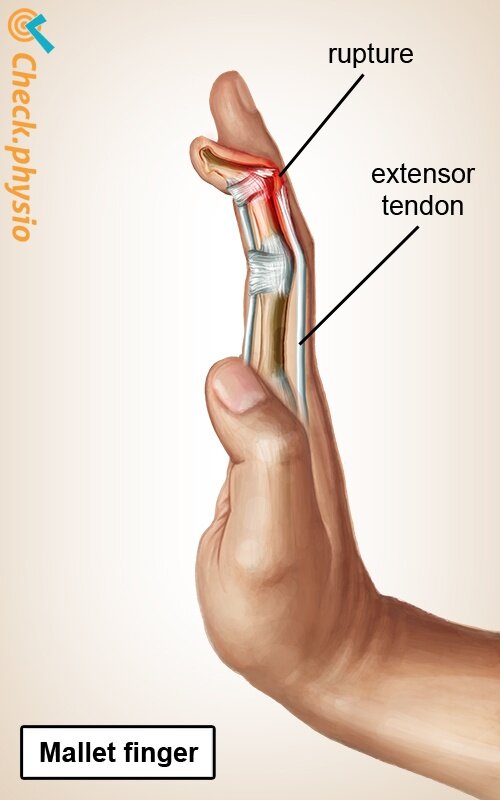Mallet Finger: What it is, and How to Heal it
Have you heard of Mallet Finger? This common injury might not sound or look like the most pleasant of conditions, but the good news is that it’s almost always uncomplicated to treat and heal. Here at Creekside, we feel privileged to have the East Kootenays’ only Certified Hand Therapist (and our co-owner!) Kari Loftsgard as a part of our team: she’s truly an expert at treating all kinds of hand and arm injuries, including this one!
Also sometimes called Baseball Finger, Mallet Finger occurs when a hard impact happens to the very tip of the finger. This most commonly happens with a ball during a sport like volleyball or soccer, but -- because our hands are constantly in use -- it can happen in all sorts of ways.
You can’t miss the quickest and easiest way to diagnose Mallet Finger: the very tip of the finger will be bent toward the palm, and it won’t be able to straighten with its own strength. Sometimes this is accompanied by swelling, bruising, or a bit of blood accumulating beneath the fingernail.
This bend at the last knuckle happens because of injury to the tendon in the finger, near the distal interphalangeal joint (or, the last finger joint near the fingertip). Usually, the impact stretches or tears that tendon, whose job is to attach the finger’s muscle to the bone. Occasionally, there can be a small fracture as well, if the tendon breaks off a piece of bone with it. This tendon is responsible for extending the finger joints, so when it’s injured, that mechanism won’t work properly.
While it might not look or feel very pleasant in the moment, Mallet Finger can always be treated. Here’s the catch: it’s important to seek treatment as soon as possible, to ensure the smoothest recovery. That said, your practitioner will likely still be able to find solutions even in older injuries.
Very rarely, more serious cases of Mallet Finger may require surgical intervention, but far more often than not, a visit to the team at Creekside can help you get your finger’s full strength and mobility back.
The most important part of your rehabilitation will be splinting. Kari will build you a custom splint that will hold the finger in the proper position, while still allowing you to use your hand. You’ll be advised to keep your splint on for several weeks, and then following that, for a few more weeks only at night.
The second part of your rehabilitation will be in exercises that maintain the range of motion in your fingers -- including the uninjured ones. After weeks of splinting, your hands won’t have gotten the amount of movement that they’re used to. Once the splint comes off, your physiotherapist will show you some exercises and movements to do regularly at home, chosen specifically for your unique case, to bring your fingers back into action with the most ease and comfort possible.
See? What perhaps looked, at first glance, like a more serious injury, is actually fully treatable and fairly simple to solve. The team at Creekside can help heal your Mallet Finger so that you can get back to your hands-on approach to life!



